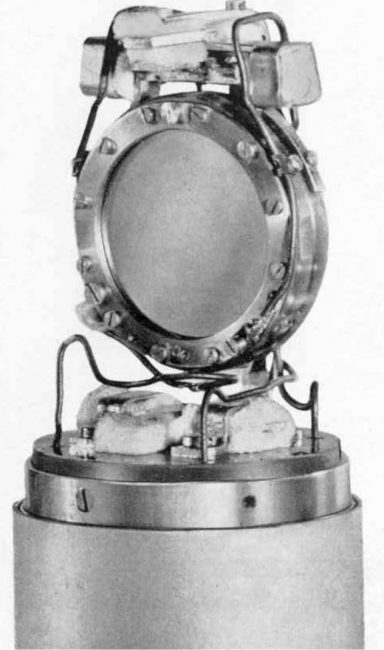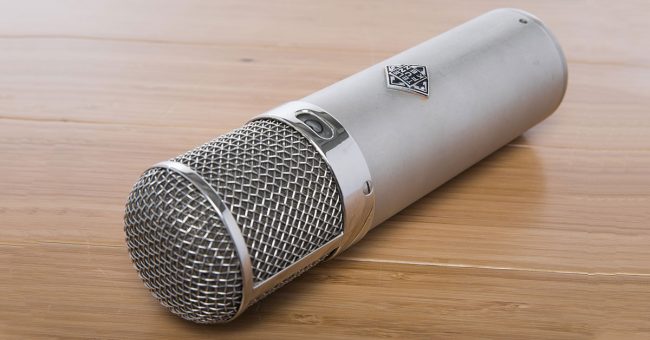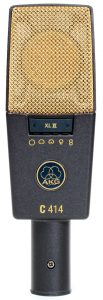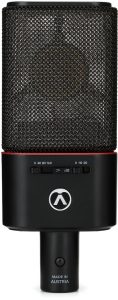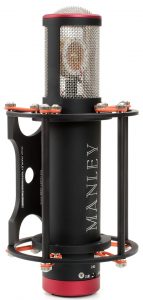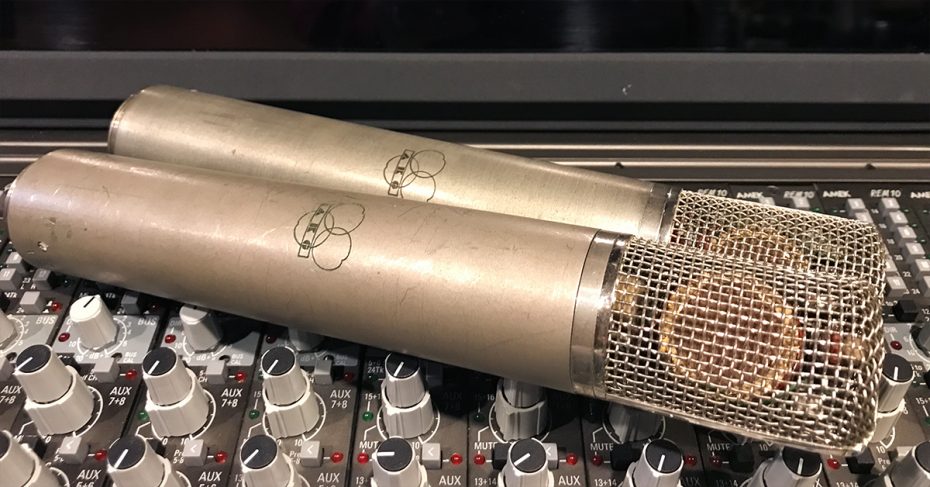
On the evening of January 22, 1985, a veritable who’s who of music luminaries converged on A&M Studios in Hollywood for the first of two sessions to record a charity single for African famine relief. Considering that the cast of solo and chorus vocalists included Michael Jackson, Bruce Springsteen, Stevie Wonder, Ray Charles, Paul Simon, Hall & Oates, Huey Lewis, Bob Dylan, Tina Turner, Cyndi Lauper, and many others — most of them at the top of their game in the mid-’80s — it would be easier to list the major artists who didn’t sing on “We Are the World” than to enumerate the ones who did! To that point, producer/conductor Quincy Jones had a sign posted in the studio where everyone would see it as they entered. It read: “Check your egos at the door.”
We Are the World
The large ensemble effort presented Jones with a challenge. He originally planned to have the 21 soloists overdub their vocals separately; but with time running short, he turned to his backup plan. An array of 21 AKG C12 microphones was set up in a U-shaped configuration. The singers then performed side by side, each in turn stepping up to their mic to sing their part. A&M Studios (formerly the site of Charlie Chaplin’s film studio and now the home of the Jim Henson Company) was also a premier facility in the mid-’80s. For proof of that, you need look no further than the fact that it had (at least) 21 of these legendary vintage tube microphones in its mic locker, all in tip-top working condition! The “We Are the World” promo videos certainly presented a conspicuous deployment of C12s and surely prompted the more tech-curious fans who saw them to wonder about the origins of this strange, long-bodied microphone their heroes were singing into.
A Revolution in Sound
The early 1950s was a time of rapid innovation in the recording industry. Stereo disc mastering was not yet ready for prime time, but the monaural 12″ long-playing record (LP) and magnetic tape, a technology liberated from Germany at the end of WWII, were new. And AKG was at war with its archrival Neumann. But instead of guns and tanks, the war was being fought with the companies’ flagship large-diaphragm tube condenser microphones.
Neumann’s U47 had hit the European market in 1947 and was gradually making its way stateside. At the dawn of the 1950s, it was really the only serious choice for high-fidelity music capture. But it soon had competition in the form of the AKG C12, introduced in 1953. AKG was a Viennese company founded in 1947; whereas Germany’s Neumann had a 19-year head start on its rival — and a virtual lock on the music, broadcast, and film-sound markets. But the C12 was poised to shake things up and position AKG as a major contender. As more artists and engineers heard what AKG’s new mic could do, it began to capture market share from the U47. One of the reasons for this was that it sounded different.
A Magic Mic for Vocals
The bold, mid-forward assertiveness of the U47— accented by a notable presence peak — was perfect for lead vocals, drums, and certain solo instruments; allowing them to punch through the mix without EQ (which was not readily available in those days). That’s what initially won over Frank Sinatra, who graduated to the U47 from RCA ribbon mics — the high-fidelity microphones of choice before the U47 arrived on the scene. But in certain situations, that mid-forward “German Sound” was a liability. In symphonic applications, for example, it had a tendency to unbalance the orchestra by intensifying the focus on individual instruments and sections. Also, not every singer needs a presence boost! Enter the C12, with its flat frequency response and silky, extended high end. Consider that Quincy Jones, in his considerable wisdom, could have chosen any microphones from A&M’s vast mic locker for the “We Are the World” vocals. Thirty-two years after its introduction, the C12 had earned a reputation as a “magic mic” for vocals.
A seductive-sounding microphone if there ever was one, the C12 had the uncanny ability to finesse any source. Sinatra was onboard, and in the years to come, he switched back and forth between the U47 and C12 depending on the musical setting. Elvis Presley, another artist who started his career with creamy-smooth ribbon mics, found that the C12 delivered that velvety smoothness, but with added detail and nuance. In later decades, the C12 would be used by Michael Jackson, Tom Petty, and countless other vocalists.
The C12 was a marvel of its era (and remains so today, as you’ll see). In contrast to the U47, which had only two selectable polar patterns, the C12 offered nine, which could be selected on its remote power supply without inducing any deviation in sensitivity or frequency response. In addition to the three basic directional pickup characteristics (cardioid, omnidirectional, and figure-8), six intermediate patterns (including hypercardioid) were available.
The “C12 Sound” in Your Studio
The original C12 is considered by many golden-eared engineers to be the Holy Grail of tube condenser mics. If you want access to this iconic sound today, you can try to find a vintage C12 in working condition (a tall order, as folks who own them don’t tend to let go of them). If you succeed, be prepared to fork over at least five figures. And that’s when the fun begins. Take it from us — owning a vintage mic is no picnic. You’re not only paying a premium; you’re buying all the problems the mic has accumulated over the course of 60 or 70 years of (ab)use.
Start with the fact that, back in the day, manufacturing tolerances were… let’s just say, not very tight; and any two mics fresh off the assembly line didn’t sound exactly the same or measure identically. Then, even if your new vintage acquisition works when you first plug it in, a half-century-old microphone will invariably have numerous components (and not just the tube) that will be in various stages of their life cycle — or death spiral. Perhaps you found a C12 for sale that’s “certified” to be in perfect working condition, its internals completely updated with new-old-spec components or modern equivalents. In this case, is it still a vintage C12? And what will it sound like?
If you’ve decided you simply must have a version of this iconic sound for your studio — but don’t have the time, budget, or temperament for constant maintenance headaches — you’re in luck. Sweetwater carries a robust selection of vintage-style tube (as well as solid-state) mics from AKG, Telefunken, and other manufacturers that will get you close to this legendary sound — and for a lot less money than a vintage original. Built to stringent manufacturing tolerances using reliable modern components, these mics deliver clean, problem-free audio with warm, vintage-flavored sonics optimized to modern, high-performance specs. Today’s mics are competitively priced and come with a manufacturer’s warranty, so you can concentrate on your music production, hassle-free.
Learn more about vintage mics in our Is Vintage Gear Really Better? article!
Modern Equivalents
Carrying on the C12 lineage, AKG’s best-known microphone, the C414, evolved through several iterations since it was first introduced in 1971. Today’s AKG C414 XLII delivers the essence of the original C12’s sonic character in a much more compact, solid-state design. If you’re looking to get close to the legendary sound heard on countless iconic recordings but tubes are not your thing, we recommend giving the C414 XLII a serious audition. The C414 XLII is one of the most versatile professional large-diaphragm condenser mics on the market. Like the C12, it offers nine polar patterns, plus it has a pad and bass roll-off, each with three positions. So, there’s literally no studio task it can’t ace. And it’s a great vocal mic!
Another affordable choice would be the Austrian Audio OC18. Driven by an engineering team with over 300 years of combined experience, Austrian Audio handcrafts modern microphones in the Viennese tradition, and they carry on the C12 legacy by using a proprietary, single-diaphragm version of the CKR12 capsule in the OC18. This solid-state large-diaphragm condenser mic is cardioid only, however it’s quite versatile, boasting a 3-position highpass filter and a robust native 148dB maximum-SPL spec — further bolstered by the inclusion of two selectable pads — which makes it as adroit at handling boisterous sources such as drums and electric guitar amps as it is at capturing the nuances of pianos and vocals.
If tubes are what you’re after, we suggest taking a look at the Manley Reference Cardioid. Like the C414 XLII, it’s a best-seller at Sweetwater — one of the reasons being that it has that coveted silky, extended high end that makes instrument and vocal recordings come to life. But in addition to being stunningly transparent-sounding, the Reference Cardioid has a bold, authoritative voice with powerful, punchy low end. Frankly, it’s quite addictive, and in spite of its fixed cardioid pickup pattern (or perhaps because of it), you’ll find yourself reaching for it constantly to capture any number of sources.
If your budget allows for it, AKG makes a modern-day version of the C12 itself. AKG’s flagship C12 VR uses the original 6072A vacuum tube and dual-diaphragm design but incorporates an updated, edge-terminated CK12 capsule and state-of-the-art components for lower noise and distortion and reliable operation. It still offers nine polar patterns, selectable from its external power supply, and comes in a smart aluminum flight case with a premium elastic suspension mount and windscreen. And it delivers that sought-after C12 sound that has graced countless classic recordings.
Back in the day, both Neumann and AKG manufactured OEM versions of their flagship condenser mics, which were re-badged and distributed by Telefunken, a German company founded in 1903. This is why you see vintage U47s and C12s bearing the Telefunken name. Telefunken, of course, is still around, and just so happens to make a Telefunken C12 that’s even dearer than AKG’s current standard-bearer. Telefunken’s C12 is designed to original specifications with nine polar patterns, a NOS tube, and a custom transformer made by the same manufacturer as vintage C12s. And as you would expect, it sounds amazing.
If you want to hear for yourself just how close the sound of a new Telefunken C12 is to a vintage C12, hear them side by side in this video.
Now, there’s another modern alternative you may wish to consider — a modeling mic system that emulates the sound of a vintage C12, such as the Townsend Labs Sphere L22 or Slate Digital VMS ML-1. Either can get you spanking close to the sound of a vintage C12. How close? Sweetwater has even done an exhaustive Virtual Mic Shootout if you wish to further explore this approach.
The Final Decision
So, assuming you’ve decided to buy new — which way should you go? As budget will likely be a deciding factor for most studio owners, we’ve presented a selection of five microphones — three tube, two solid-state — spanning a fairly broad price range. Three of them offer nine polar patterns, while two (the OC18 and the Manley) are cardioid only. The two big-ticket C12s are not equipped with pre-attenuation pads, while the AKG C414 XLII is fitted with three (6dB, 12dB, and 18dB), the OC18 has two (10dB and 20dB), and the Manley offers one (10dB). The C414 XLII and OC18 also have three onboard bass-cut filters, so the two most affordable options here are also quite versatile.
The C414 XLII and OC18 are the only solid-state mics in the group, which means they can be smaller, fitting into tight spaces where the tube mics cannot. And indeed, with their svelte form factor and onboard pads, both of them make wonderful snare drum mics. They’re also great on toms, cymbals and overheads, and even kick drum. You can set them right in front of a cranked guitar amp; and they make superb room mics. Also consider the creative advantages of owning a matched stereo pair; their relative affordability makes owning a stereo pair a no-brainer. If it seems like we’re sweet on the C414 XLII — it’s because we are. AKG’s C414 XLII is a go-to staple in Sweetwater Studios’ massive mic locker, and many of our engineers and employees personally own and use them every day. And although a relative newcomer, the Austrian Audio OC18 is a solid performer that certainly deserves your serious consideration.
With that said, you may be in the market for the added warmth of tubes, particularly for lead vocals that punch right out of the track. And for that, we can’t think of a better (or more budget-savvy) choice than the Manley Reference Cardioid. It has the fixed polar pattern and 10dB pad that make it perfect for perhaps 90% of your daily studio work, and it sounds marvelous. So, there you have it. The sonic essence of the legendary AKG C12 is alive and well in these modern microphones, any one (or two) of which can take your recordings to the next level.


